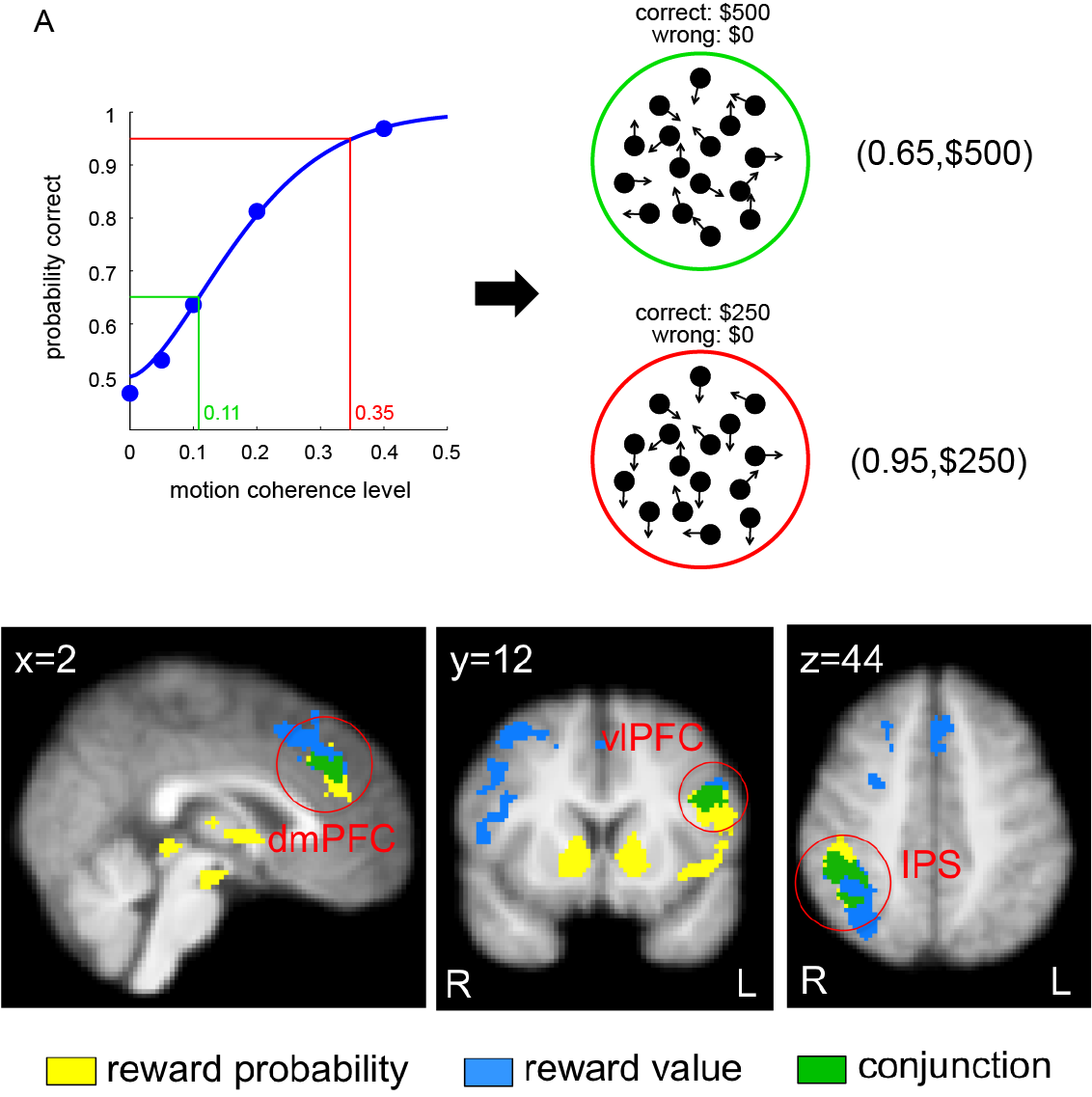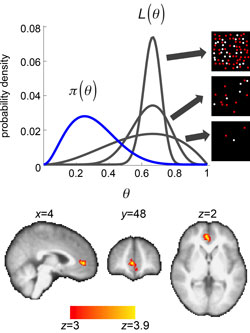 |
 |
Publications |

| Shih, W-Y., Yu, H-Y., Lee, C-C., Chou, C-C., Chen, C., Glimcher, P.W., Wu, S-W. Electrophysiological population dynamics reveal context dependencies during decision making in human frontal cortex. Nature Communications 14, 7821 (2023). https://doi.org/10.1038/s41467-023-42092-x. [PDF] |
| Wang, M-C., Wu, G., Wu, S-W. (2023). System Neglect and the Neurocomputational Substrates for Over- and Underreactions to Change. bioRxiv, doi: https://doi.org/10.1101/2023.05.30.542806. [PDF] |
| Niddam, D-M., Wu, S-W., Lai, K-L,. Yang, Y-Y,. Wang, Y-F., Wang, S-J. (2023). An altered reward system characterizes chronic migraine with medication overuse headache. Cephalalgia, 43(4) 1–13, doi: 10.1177/03331024231158088. [PDF] |
| Shih, W-Y., Yu, H-Y., Lee, C-C., Chou, C-C., Chen, C., Glimcher, P.W., Wu, S-W. (2022). Electrophysiological population dynamics reveal context dependencies during decision making in human frontal cortex. bioRxiv, doi: https://doi.org/10.1101/2022.10.11.511706. [PDF] |
| Farashahi, S., Xu, J., Wu, S-W., Soltani, A. (2020). Learning arbitrary stimulus-reward associations for naturalistic stimuli involves transition from learning about features to learning about objects. Cognition, 205:104425, doi: 10.1016/j.cognition.2020.104425. [PDF] |
| Yang, Y-Y., Wu, S-W. (2020). Base rate neglect and neural computations for subjective weight in decision under uncertainty. Proceedings of the National Academy of Sciences of the United States of America, 117(29): 16908-16919, doi: 10.1073/pnas.1912378117. [PDF] |
| Lin, W-H., Gardner, J.L, Wu, S-W. (2020). Context effects on probability estimation. PLOS Biology, 18(3): e3000634. doi: 10.1371/journal.pbio.3000634. [PDF] |
Wu, S-W., Glimcher, P.W. (2018). The Emerging Standard Neurobiological Model of Decision Making: Strengths, Weaknesses, and Future Directions. In S. Chen, M. Kaboudan, & Y. Du (Authors), The Oxford handbook of computational economics and finance(pp. 688-713). New York: Oxford University Press. doi: 10.1093/oxfordhb/9780199844371.013.45. [PDF] |
Farashahi, S., Ting, C-C., Kao, C-H., Wu,S-W., Soltani, A. (2018). Dynamic combination of sensory and reward information under time pressure. PLOS Computational Biology, 14(3): e1006070. doi: 10.1371/journal.pcbi.1006070 [PDF] [Data] |
Wu, S-W., Delgado, M.R., Maloney, L.T. (2015). Gambling on visual performance: Neural correlates of metacognitive choice between visual lotteries. Frontiers in Neuroscience, 9:314. doi: 10.3389/fnins.2015.00314. |
 |
A lottery is a list of mutually exclusive outcomes together with their associated probabilities of occurrence. Decision making is often modeled as choices between lotteries and—in typical research on decision under risk—the probabilities are given to the subject explicitly in numerical form. In this study, we examined lottery decision task where the probabilities of receiving various rewards are contingent on the subjects’ own visual performance in a random-dot-motion (RDM) discrimination task, a metacognitive or second order judgment. While there is a large literature concerning the RDM task and there is also a large literature on decision under risk, little is known about metacognitive decisions when the source of uncertainty is visual. Using fMRI with humans, we found distinct fronto-striatal and fronto-parietal networks representing subjects’ estimates of his or her performance, reward value, and the expected value (EV) of the lotteries. The fronto-striatal network includes the dorsomedial prefrontal cortex and the ventral striatum, involved in reward processing and value-based decision-making. The fronto-parietal network includes the intraparietal sulcus and the ventrolateral prefrontal cortex, which was shown to be involved in the accumulation of sensory evidence during visual decision making and in metacognitive judgments on visual performance. These results demonstrate that—while valuation of performance-based lotteries involves a common fronto-striatal valuation network—an additional network unique to the estimation of task-related performance is recruited for the integration of probability and reward information when probability is inferred from visual performance. [PDF]
|
Ting, C-C., Yu, C-C., Maloney, L.T., Wu, S-W. (2015). Neural mechanisms for integrating prior knowledge and likelihood in value-based probabilistic inference. Journal of Neuroscience, 35:1792-1805. doi: 10.1523/JNEUROSCI.3161-14.2015. |
 |
In Bayesian decision theory, knowledge about the probabilities of possible outcomes is captured by a prior distribution and a likelihood function. The prior reflects past knowledge and the likelihood summarizes current sensory information. The two combined (integrated) form a posterior distribution that allows estimation of the probability of different possible outcomes. In this study, we investigated the neural mechanisms underlying Bayesian integration using a novel lottery decision task in which both prior knowledge and likelihood information about reward probability were systematically manipulated on a trial-by-trial basis. Consistent with Bayesian integration, as sample size increased, subjects tended to weigh likelihood information more compared with prior information. Using fMRI in humans, we found that the medial prefrontal cortex (mPFC) correlated with the mean of the posterior distribution, a statistic that reflects the integration of prior knowledge and likelihood of reward probability. Subsequent analysis revealed that both prior and likelihood infor- mation were represented in mPFC and that the neural representations of prior and likelihood in mPFC reflected changes in the behav- iorally estimated weights assigned to these different sources of information in response to changes in the environment. Together, these results establish the role of mPFC in prior-likelihood integration and highlight its involvement in representing and integrating these distinct sources of information. [PDF]
|
| Yu, J., Tseng, P., Hung, D.L., Wu, S-W., Juan, C-H. (2015). Brain stimulation improves cognitive control by modulating medial-frontal activity and preSMA-vmPFC functional connectivity. Human Brain Mapping, 36:4004-4015. doi: 10.1002/hbm.22893. [PDF]
|
| Wu, S-W., Delgado, M.R., & Maloney, L.T. (2015). Motor decision-making. In Brain Mapping: An Encyclopedic Reference, vol.3, pp .417-427 Elsevier. [PDF]
|
| Wu, S-W., Delgado, M. R. and Maloney, L. T. (2011). The neural correlates of subjective utility of monetary outcome and probability weight in economic and in motor decision under risk. Journal of Neuroscience, 31(24),8822-8831. doi: 10.1523/JNEUROSCI.0540-11.2011. [PDF]
|
| Zhang, H., Wu, S-W., & Maloney, L. T. (2010). Planning multiple movements within a fixed time limit: The cost of constrained time allocation in a visuo-motor task. Journal of Vision, 10(6), 1-17. doi: 10.1167/10.6.1. [PDF]
|
| Wu, S-W., Dal Martello, M. F. & Maloney, L. T. (2009b). Suboptimal allocation of time in sequential movements. PLoS ONE, 4(12): e8228. doi: 10.1371/journal.pone.0008228. [PDF]
|
| Wu, S-W., Delgado, M. R. & Maloney, L. T. (2009a). Economic decision-making compared with an equivalent motor task. Proceedings of the National Academy of Sciences USA, 106(15): 6088-93. doi: 10.1073/pnas.0900102106. [PDF]
|
| Dean, M., Wu, S-W., & Maloney, L. T. (2007). Trading off speed and accuracy in rapid, goal-directed movements. Journal of Vision, 7(5):10, 1-12. doi: 10.1167/7.5.10. [PDF]
|
| Wu, S.-W., Trommershauser, J., Maloney, L. T., & Landy, M. S. (2006). Limits to human movement planning in tasks with asymmetric gain landscapes. Journal of Vision, 6, 53-63. doi: 10.1167/6.1.5. [PDF]
|
| Back to Top |